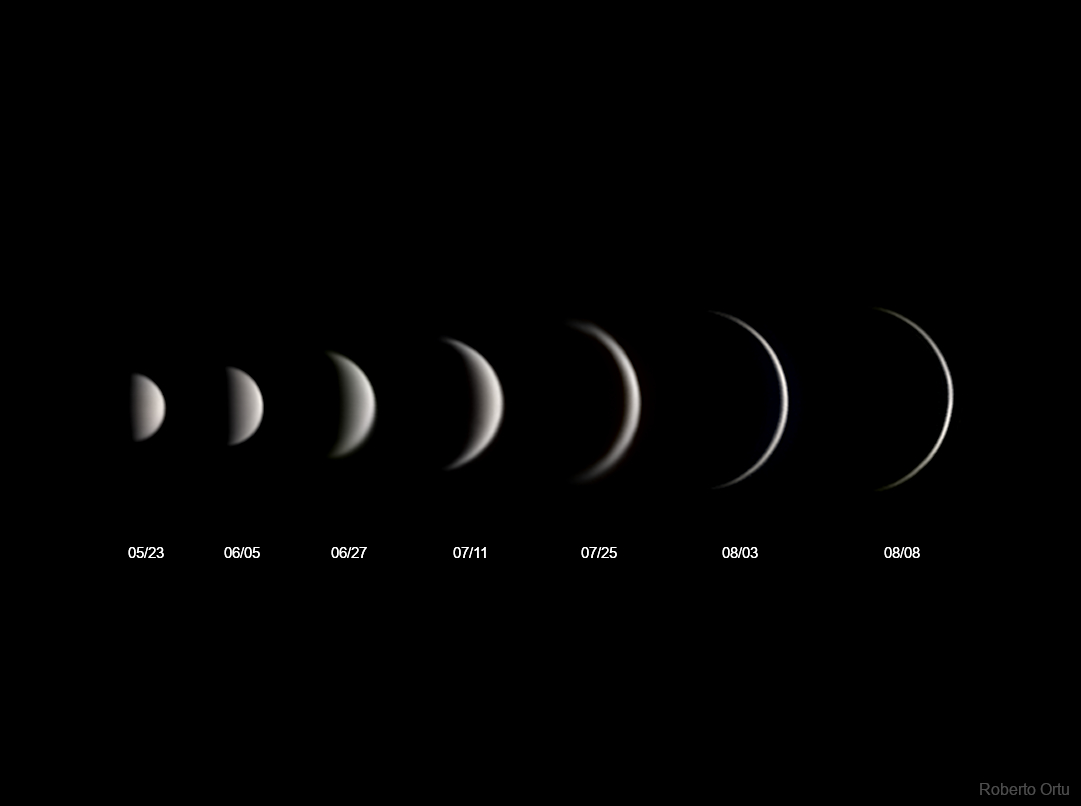2023年8月26日
Crescents of Venus
Image Credit & Copyright: Roberto Ortu
Explanation: Just as the Moon goes through phases, Venus’ visible sunlit hemisphere waxes and wanes. This sequence of telescopic images illustrates the steady changes for Venus during its recent 2023 apparition as our evening star. Gliding along its interior orbit between Earth and Sun, Venus grows larger during that period because it is approaching planet Earth. Its crescent narrows though, as the inner planet swings closer to our line-of-sight to the Sun. Closest to the Earth-Sun line but passing about 8 degrees south of the Sun, on August 13 Venus reached its (non-judgmental) inferior conjunction. And now Venus shines above the eastern horizon in predawn skies, completing its transition to planet Earth’s morning star. On August 21, NASA’s Parker Solar Probe completed its sixth gravity assist flyby of Venus, using the encounter to maneuver the probe toward its closest approach yet to the Sun.
Tomorrow’s picture: Three Galaxies and a Comet
金星的蛾眉位相
影像提供与版权: Roberto Ortu
说明: 类似月亮有位相变化一样,金星可见的日耀区也会有盈亏。这组望远镜影像序列,呈现金星在2023年以昏星之姿出现的期间,日耀区渐次变化的景象。在地球与太阳之间的内行星轨道运行的金星,在这段期间的张角之所以会变大,是因为它越来越靠近地球。而它的蛾眉相之所以会愈来愈细,则是因为金星逐渐靠近我们往太阳的视线。它在8月13日来到最接近地球的下合位置,以大约8度的间距从太阳下方通过。如今金星已在清晨的东方地平线上方绽放光芒,结束了成为地球晨星的过渡。在8月21日,NASA的帕克太阳探测器进行了对金星的第六次引力辅助飞越,并利用这次的相遇,操控探测器往记录上最靠近太阳的位置移动。
明日的图片: Three Galaxies and a Comet



